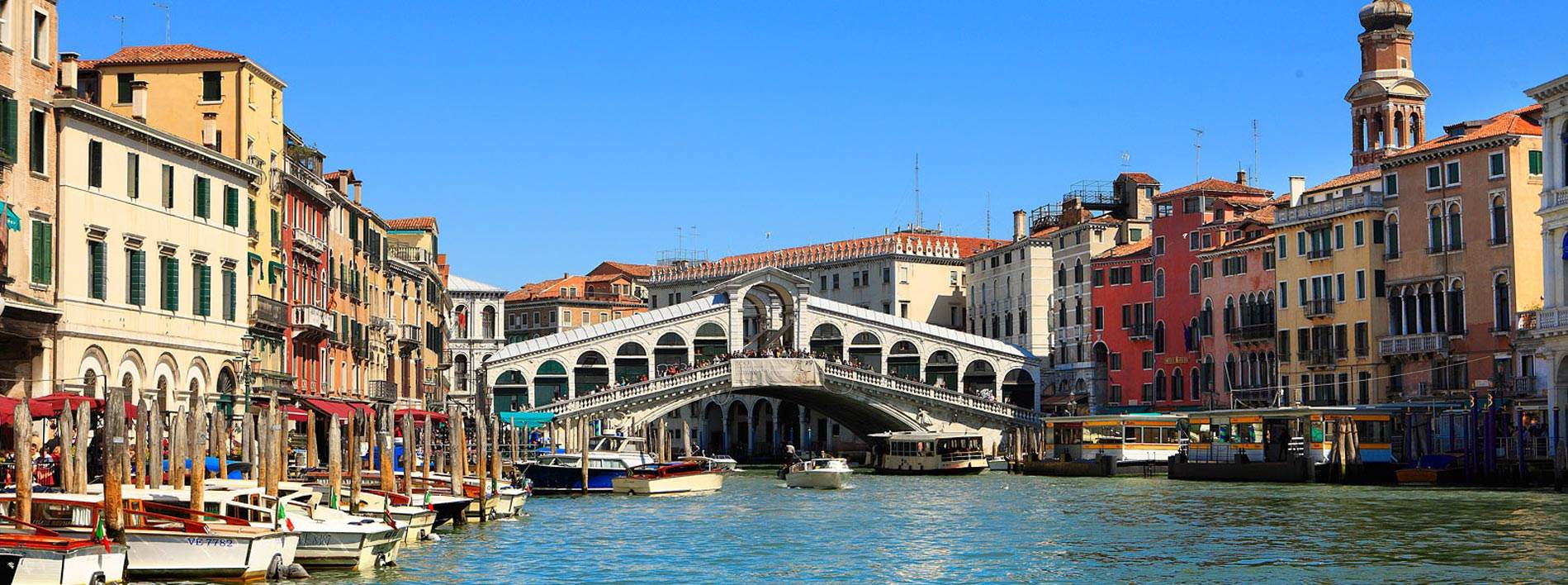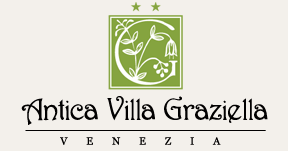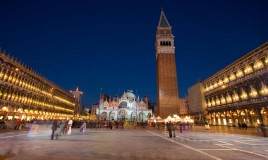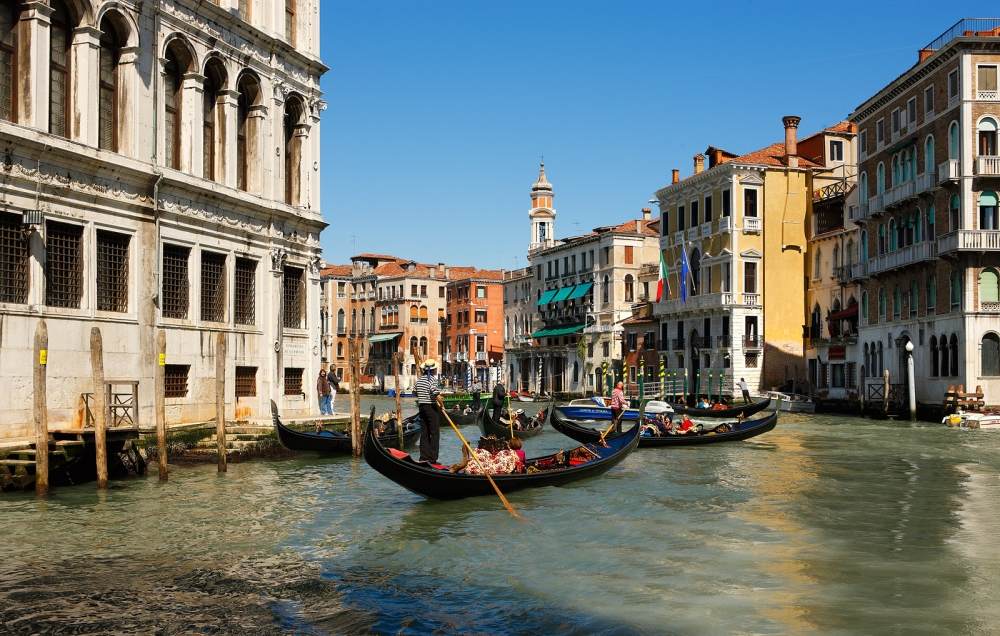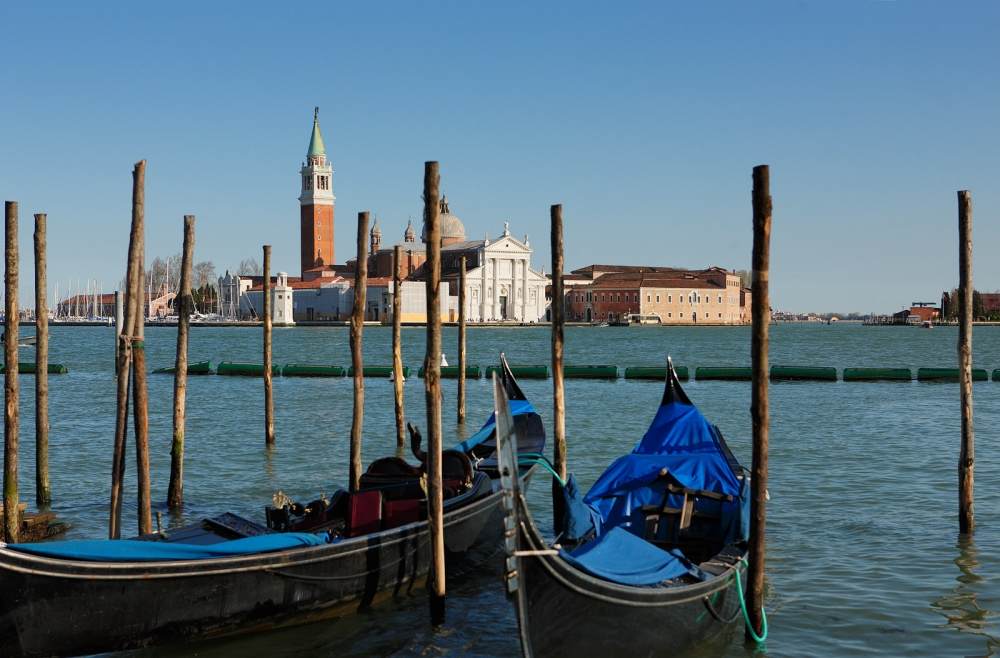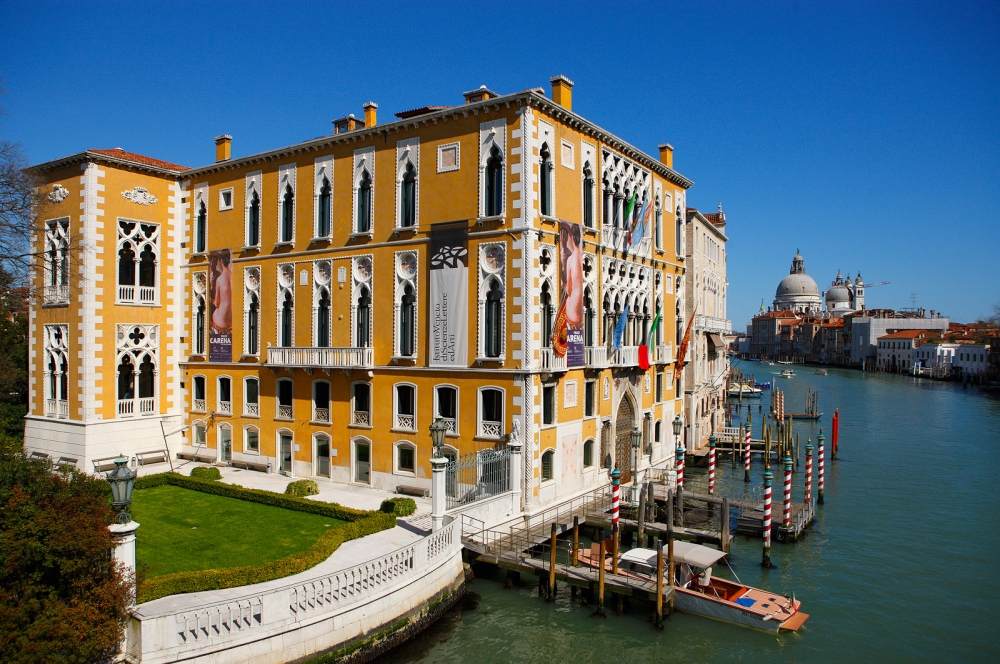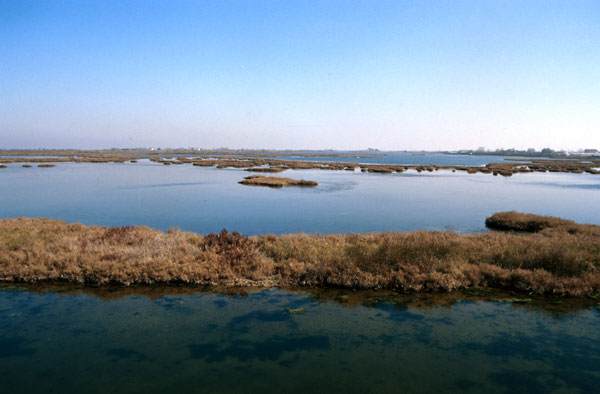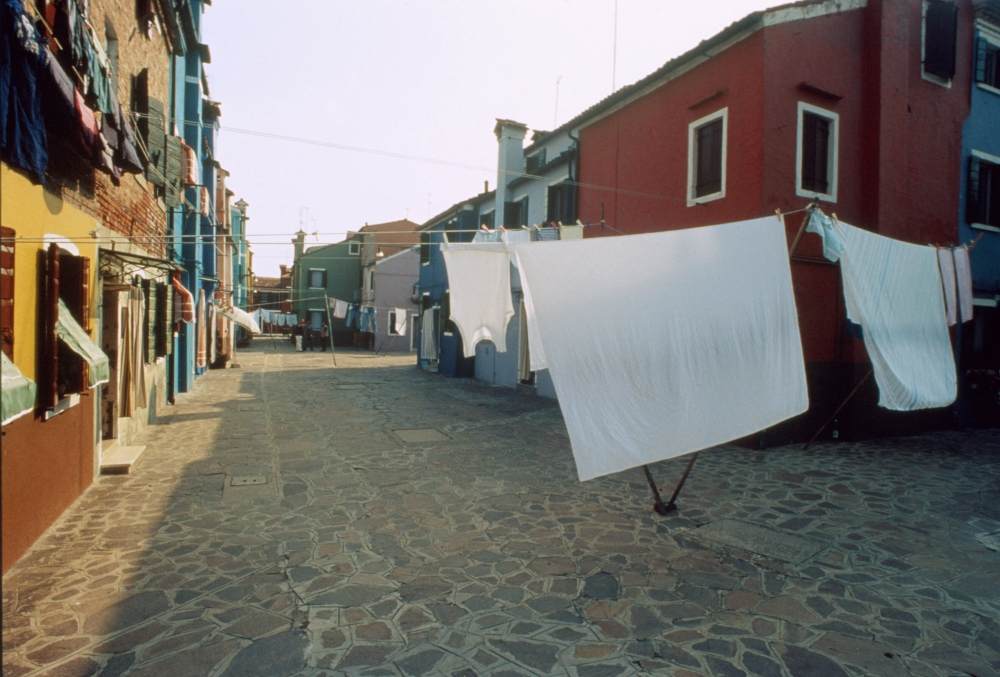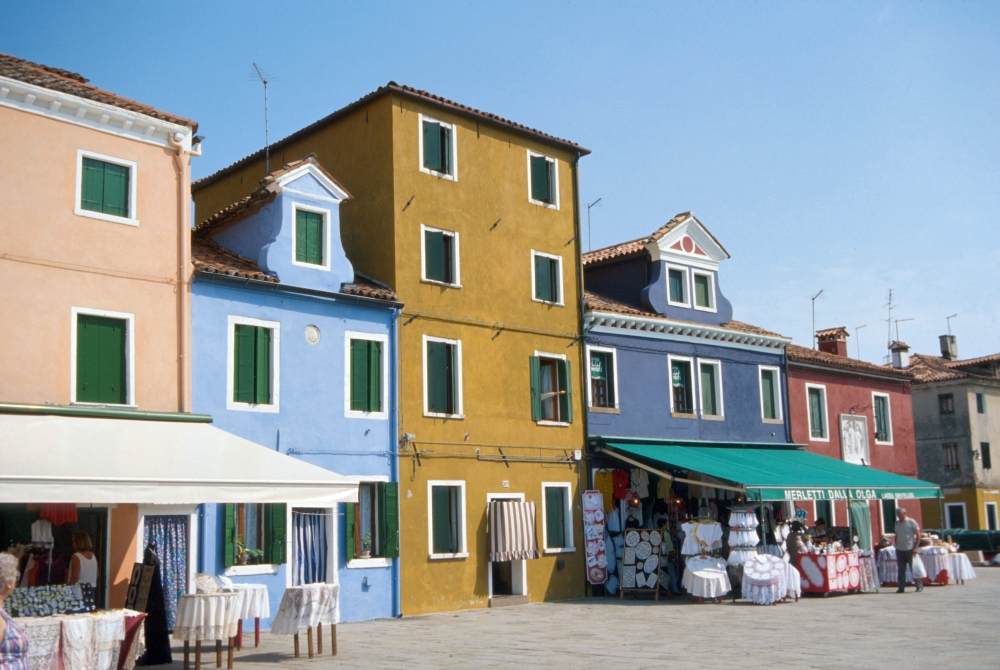Itinéraires
- ITINÉRAIRE : WEEK-END À VENISE
Pour ceux qui ne passent qu’une journée à Venise - ITINÉRAIRE : VENISE CENTRE HISTORIQUE
La visite commence à l’Accademia - ITINÉRAIRE/TOUR : ÎLES DE LA LAGUNE
Murano, Burano et Torcello - ITINÉRAIRE/TOUR : LIDO DE VENISE
Prenez le vaporetto pour rejoindre la plage de Venise - TOUR : LA RIVIERA DU BRENTA ET LES VILLAS DE PALLADIO
Les merveilleuses villas vénitiennes le long du Brenta - FASCINANTE VENISE
De Piazzale Roma à la Place Saint Marc - LA DOLCE VITA À VENISE
- CONSEILS UTILES !
Mode d’emploi
ITINÉRAIRE : WEEK-END À VENISE
(Pour ceux qui ne passent qu’une journée à Venise)
Departure from Hotel Villa Graziella is by bus n°6,or 6/.The bus stop is in V.le Paolucci after the ESSO gasoline station. The journey to Venice takes about ten /fifteen minutes. A one way ticket costs 1,00 EURO per person,which you can buy at Villa Graziella ‘s Reception. Arrival in Venice is at P.le Roma’s bus terminal.Take the pubblic-boat line 1 (called « VAPORETTO » which is behind the ACTV ticket office,where the Grand canal begins it’s main waterway. The journey takes about 20 minutes (a one way ticket costs 6,00 EURO per person ) in the direction of St. Mark’s Square from where you will have an enchanting view of all the 12-18th century marble Palaces along the Grand Canal. Stop at the Rialto Bridge which has been constructed in stone to substitute the wooden bridge of the 16th century.It has three walkways and two rows of shops.Proceed in the direction of St. Mark’s Square on foot, or by « vaporetto » (line 1). Visit: – The Basilica a mixed Byzantine and Western style stucture built from 1029 to 1073. Inside is rich with marbles and pillars, carried by the ancient merchants of Venice from the Orient; you can admire the Mosaici Bizantini which are free of charge.Here are the famous original bronze horses, made in the IV century, stolen from the Venetian in Costantinopoli during the 4th Crusade of the XIII century and, after 600 years, carried by Napoleon in Paris during the French occupation of Venice. Finally,in 1800,they were carried back into the Basilica. The originals were restored some years ago and are preserved inside.(Outside are the copies!). The rich Treasury, with the famous Pala d’Oro. The Campanileof the 10th century (height 100 m.) collapsed in 1902 and was rebuilt. From here you will see a wonderfull view of all Venice. (It has a lift!)
The Doge’s Palace is a gothic Rinascimental structure dating from the XIV-XV centuries, seat of the government of the Serenissima and residence of the Doge. The ground floor gallery is supported by thirty-six columns. The open upper gallery has seventy-one columns; to the right of the entrance, from between the ninth and the tenth columns, sentences of death were announced to the pubblic.
The main entrance is the Porta della Carta, so called because placards bearing decrees were posted on it. The courtyard.- This is entred via Porta della Carta. There are replicas of statues of Adam and Eve by Rizzo; the Giant’s stairway (Scala dei Giganti), so called after the massive figures of Mars and Neptune by Sansovino at its summit. The wells have bronze copings.
Doge Faliero, who was accused of conspiring against the Republic, was
beheaded in this courtyard in 1355. Interior.- By way of scala d’Oro (Golden Stairway, Sansovino 1558) we reach the Doge’s Apartments used for temporary exhibitions on the first floor.Continuing up the Scala d’ Oro to the floor above we visit the Four Doors Room, Anticollegio, College Hall, Meeting Chamber of the Council of ten.The Grand Council Chamber is the finest room in the palace. Over the Doge’s throne Tintoretto painted his masterpiece, Paradise, one of the largest compositions in the world. On the ceiling (near the throne) Veronese painted one of his masterpieces, the Apotheosis of Venice, while the cornice bears the portraits of seventy-six Doges: one of the frames is empty, the missing one is Faliero the traditor.
Behind the Doge’s Palace there is the Bridge of Sighs (1602). It connects the Doge’s Palace with the prisons and was called « of Sighs »owing to the lamentations of prisoners who were conducted across it to their place of execution and from which saw their last view of the lagoon. The visit to the Doge’s Palace court and to the Giant’s Staircase is free, while the Halls
inside and the Prisons need a ticket. Other famous monuments in St. Mark’s Square are the Clock Tower (Torre dell’orologio)and Law Courts.The Clock Tower dates from the end of the 15th century.The dial bears the signs of the zodiac; with his famous « Mori » (Moors, two male bronze sculptures that ring the bell every quarter of hour for the last 500 years). The Ala Napoleonica, which completes the Square, was built by order of Napoleon in 1810,under entrance to the Correr Museum which contains the historical and artistic collection of the city.Drink something to have a break in the old and famous « Cafè » Florian with its small orchestra or in « Cafè » Quadri.(Attention they are very expensive!)
From St. Mark’s Square, return to P.le Roma following the direction of the Rialto Bridge. Pass through the famous fruit and fish market, and, after crossing Campo San Polo,arrive at the Frari church, a 13th century gothic structure, highly recommended for an inside view of the works of art like:
the tomb of the painter Titian; the titian’s monumental Assumption (1516-18)above the high altar, one of the most famous paitings in Venice.The tomb of sculptor Antonio Canova (1827), a bombastic pyramid of white marble originally designed by Canova. From where it is a short walk to p.le Roma.
If you want, it is possible to do this Tour starting from P.le Roma on foot and, at the end, taking the « Vaporetto » n°1 from St. Mark’s Square to P.le Roma.
ITINÉRAIRE: VENISE CENTRE HISTORIQUE
Departure from Hotel Villa Graziella and arrival in Venice (P.le Roma). Take the pubblic boat « Vaporetto » line 1 and stop at Accademia. Visit the Accademia art gallery ( works by Giorgione, Tiziano, Carpaccio, Tintoretto ).
Walk until you reach Punta della Dogana (custom’s point) with an exclusive view of the island of St.George with its palladian church and St.Mark’s basin.
Visit the church of Santa Maria Della Salute, a baroque structure with an octoganal centre, constructed on the occasion of the end of plague between 1631 and 1687.
Eventual visit to the Peggy Guggenheim Collection (modern art). Meander through the « sestiere di Dorsoduro » cross the Accademia Bridge and you will arrive in Campo Santo Stefano from where it is a short walk to St. mark’s Squre. Walk along the harbour promenade of the Riva degli Schiavoni until you reach the Arsenal, heart of the naval power of the Serenissima, a complex of Work-shops, deposit and canteens; well worth a visit to the Museum of Naval History and the Biennale. Return to P.le Roma with the « Vaporetto » line 1 from St. Mark’s Square.
ITINÉRAIRE/TOUR : ÎLES DE LA LAGUNE
Departure from Hotel Villa Graziella and arrival in Venice (P.le Roma). Take the « Vaporetto » line 42 to Murano, famous for its glassworks.From here take the « Vaporetto » line 12 to Burano, island of fisherman with multicoloured houses and well known for lace. Take always the line 12 to Torcello, visit the antique Cathedral of S. Maria Assunta with its mosaics andb the Church of S.Fosca (VII-XI century). Retake line 12 and get off at Murano,from here return with « Vaporetto » line 41 in the direction of P.le Roma.
ITINÉRAIRE/TOUR : LIDO DE VENISE
Departure from Hotel Villa Graziella and arrival in Venice (P.le Roma). Take the « Vaporetto » line 51 to Lido (S. Maria Elisabetta) and spend the day at its beautiful and famous beach.
Lido doesn’t have only the beach there are : the Circolo Ippico, a riding club, and the Golf Club. You can visit the Jewish Cemetery, dating from 1389, one of the oldest in Europe.You can see in Lungomare Marconi the Hotel Excelsior, built in 1908 by the architect G. Sardi in an extravagant eclectic style, with a strong Moresque flavour, which combines well with the elegant white cloth bathing-huts. Near by the Hotel premises stand the imposing bulk of the Palazzo della Mostra Internazionale del Cinema, run by the Biennale di Venezia, and the summer seat of the Casinò comunale; both were built during Fascism on the ruins of the Austrian Forte delle Quattro Fontane. Further along the sea-side Lungomare is the palazzo of the Hotel Des Bains, built in 1900, and made famous by Thomas Mann’s novel La Morte a Venezia and by Luchino Visconti’s homonymous film. Soon after the Hotel is Piazzale Bucintoro, location of the first Lido Beach resort since 1857. On the left side of the Piazzale opens up again the Gran Viale, which leads you back to S. Maria Elisabetta. Return to Venice (P.le Roma) with « Vaporetto » line 52.
TOUR : LA RIVIERA DU BRENTA ET LES VILLAS DE PALLADIO
Make an excursion to the enchanting Venetian Villas Situated along the Brenta River by car or by bicycle (if you have a boat navigate along the river) in the direction of Padova (Padua). Reccomended is a visit to the Villa Foscari by Palladio at Malcontenta (dating from the 5th century with curvilinear tympanum and an atrium of a greek cross), Villa Wiildmann at Mira (7 th century with curvilinear tympanum and an atrium of doric colums), Villa La Barbariga at San Pietro of Strà (7 th century with a central building and symmetrical wings), Villa Pisani Nazionale at Strà (7 th century with two courty yards separated by a central building with triangular tympanum) immersed in a huge park with labyrint.
FASCINANTE VENISE
From Piazzale Roma ( bus terminal ) to St. Mark’s Square.
by Alessandro Heinrich
From the starting point take the direction to the Tolentini (today ‘s site of one of the venetian universities), and walk for 10 minutes in direction to the Frari’s Basilic. The Church was built between 1330 and 1420. On 27 May 1492 it was consecrated and dedicated to the Assumtion of our Lady « S. Maria Gloriosa dei Frari ».
With the passing of the centuries it has grown richer and more beautiful in its monuments, sculptures and paintings.The Basilica is a classical example of Gothic style. The Romanesque Campanile style (70 metreshigh, the second-hightest un Venice after St. Mark’s) offers a breathtake view over the whole city and the islands of the lagoon.
In front of and to the left of the Basilica is a large square, in venetian toponomy know as a « campo » (field) because it was originally grass covered like the many other campi and campiello of the city.
In front of the church runs the « rio dei frari » which is crossed by a bridge built in 1428 by the friars. From the bridge, to the right of the church, can be seen the entrance to the state archives, at one time the great friary of the frari.. The other buildings to the left were also once brotherhood centres (the schools), a thriving centre of religious and cultural life (the schools of the passion, the florentines, the milanese, etc). Inside the basilica you can find the Canova tomb, the « Assumption » by Titian and many Doge’s monuments.
From Campo dei Frari you walk now to the most commercial area of Venice: Rialto, with the homonymous Bridge Famous for having several shops along it, the fish market, and many small places (bacari) where you can get something typical to eator to drink (cicheti and spritz). If you look for nice seafood restaurants we suggest you « La Madonna », « La fiacchetteria Toscana » and « Ae Poste Vecie », all of them near the Rialto bridge, with reasonable prices and very good service.
This is one of the best places to view the Grand Canal from in all its charm. The Rialto bridge is the oldest of the three bridges spanning the canal. Originally made of wood, due to its instantabillty, it was decided to build a new bridge. A competition was called, attracting the partecipation of such well-know architects as Michelangelo, Palladio and Sansovino, all of whom worked on the project for years. Antonio Da ponte (a relatively unknow architect in such illustrious company) was awarded the contract and designed the bridge which was not finished until 1592.
The 24 shops lining the bridge are separated by a double arcade from which you can walk out onto the terraces. Farther ahead on the left bank are the 13th century Palazzo Loredan and the 12th century Palazzo Farsetti (today the Venice Town Hall).
Following the tour by boat from Rialto landing stage, it’s possible to admire Palazzo Pisani, Palazzo Balbi and Ca’ Foscari, now the Economics and Business School of the University of Venice.
A bit farther along the left bank rises the 18 th century Palazzo Grassi,
built in 1718 by Giorgio Massari for the Grassi family of Bologna, and now seat of many cultural events (art exibitions, etc.)
You have now reached another very important bridge: the Accademia bridge, made of wood and metal, has recently been completed restored.
Farther on is a palace set in a lovely green park, the Palazzo Venier Dei Leoni which houses the fabulous Guggenheim Collection.
Before getting off from the boat on your right is the majestic church of Santa Maria della Salute, the masterpiece of Baldassarre Longhena.
Arriving in St. Mark’s Square, you can restore in one of the most typical streets in Venice: Calle delle Rasse where you we suggest to take a « cicheto » together with a « Spritz » at the bar « Forst » or bar « Clodia ».
LA DOLCE VITA À VENISE
By Alessandro Heinrich
It’s said that in Venice is a dead city; that’s not true if you know where
to go. First of all, also during the night, Venice is a safe town.
There are many nice restaurant where you can stay after dinner just to get adrink or to dance. That’s why we suggest you to go to « Fond. Ormesini » and « Fond. della Misericordia » (a street 10 minutes walking far from the train station) to eat in the Mexican Restaurant or to get a drink « Al Paradiso Perduto » where every weekend you can here for live music concerts. Near the Rialto bridge there are many typical « Bacari » as well as pubs, Trattorie, etc.
For the lovers of the risk there’s the Casino (Ca’ Vendramin Calergi, a beautiful vevetian building during winter, the Casino Palace in lido for the rest of the year). In Lido, the seaside resort of Venice, during the first week of September there ‘s the Film Festival, a very important kermesse where to see movies, meet actors, or just to walk in one of the most exclusives beaches of Italy (for nice parties we suggest « Al Caribe » or « Al Canton », both nice places
where to meet young people and listen for good music).
Also cinemas, theatres, discotheques, fun-fairs either in Venice or in Mestre, the industrial side of the city, 10 minutes far from the islands. In a word: Venice offers to all its guests unforgottable nights.
CONSEILS UTILES !
Walk around the city without being an obstacle to others. Always keep to the right in the streets and on the bridges in single file.
Sitting down on the ground, or on the steps of bridges, churches and buildings, obstructs pedestrian traffic.
For a quick picnic lunch, City Police can suggest the most appropriate
places to go. Trash should be disposed of in the designated containers.
Venice is not just San Marco: it is easy to visit places of touristic interest, on foot or by vaporetto.
Prefer the tourist lines (3-4-16-23-82), and deposit your backpacks and suitcases in the designated areas.
Watch your wallet ! You could run into skilled pickpockets, just like
anywhere else in the world.
For any service you ask for pay the right price. be on the alert for unauthorized persons who offer unrequested services such as excursions, parking, transportation, etc.
The rates for services (vaporetti, taxis, gondolas, etc.) are available at
the offices of the A.P.T. (the i symbol).
For tourists with walking disabilities, the A.P.T. offices offer maps of the city with special itineraries and the keys for use of the chair-lifts on bridges. Respect the rules imposed by the city of Venice which prohibit even men to walk through the streets barechested or sporting apparel commonly worn on beaches.
A.P.T. Venezia – Castello, 4421 tel. 0415230399
Offres Spéciales
